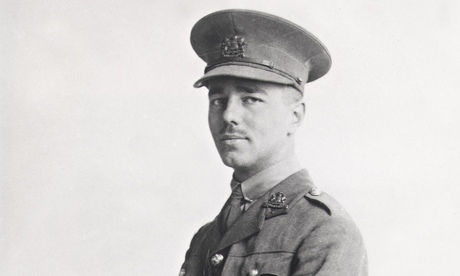
An Edwardian redbrick semi-detached house on the outskirts of Shrewsbury is being honoured on Monday with a Grade II listing, not for its modest architectural qualities but for the man who spent his last two days of leave there in 1918, before returning to France and death in the trenches.
Wilfred Owen, one of the most famous of the first world war poets, was killed in action on 4 November, just days before the Armistice. It was at the house, 69 Monkmoor Road, that his parents learned of his death as the bells of Shrewsbury abbey were ringing to hail the end of the war.
He was already writing poetry when his family moved to the newly built house in 1910, when he was 17. The house has remained remarkably unchanged, including the bedroom where Owen set up his writing desk.
Roger Bowdler, director of designation at English Heritage, said: “The house is little altered, and he would still feel at home in his attic bedroom. It was his last real home and is a tangible link to one of one of our greatest war poets.”
Most of his best known poems were published in a single volume two years after his death and edited by his friend and mentor Siegfried Sassoon. They included poems which became some of the most famous memorials to the war, including Anthem for Doomed Youth, and Dulce et Decorum Est, with its savage description of a man dying of gas poisoning and the lines: “My friend, you would not tell with such high zest/To children ardent for some desperate glory/The old Lie; Dulce et decorum est/Pro patria mori.”
His memorial in the grounds of Shrewsbury Abbey, commissioned for the centenary of his birth in 1993, bears another quotation: “I am the enemy you killed, my friend.”
Heritage minister, Ed Vaizey, said the house deserved the listing, as Owen’s last home before his untimely death.
“Wilfred Owen was one of the most profound and distinct voices of the first world war. His bleak and candid accounts of the horrors of war have shaped our understanding of life on the western front.”
• This article was amended on 30 December 2014. It was the bells of Shrewsbury abbey that were ringing when Wilfred Owen’s parents learned of his death, not Shrewsbury cathedral as an earlier version said.

